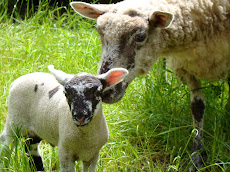Back in the day, people had very diverse farms. They grew fruits and veggies all year long. They raised chickens, goats, pigs, geese, etc. This diversity was really important. It meant survival. If your storage potatoes failed you still had turnips, rutabagas, parsnips and beets. You couldn't just head to Fred Meyers to pick up tomatoes in December to make your marinara sauce. You had to rely on a good harvest and your skills in processing food.
That's another skill nearly lost in the US - food processing. I have my grandma's pressure cooker and its originals instruction manual. It provides tips for wood burning stoves as well as electric. Pressure cooking has been around for a long while - since 1679. But the home cooking method has only been around since the early 1900's. Mine is from the 1940's at which time pressure cookers where one of the hottest selling items in stores. A new model pressure cooker was like the new model iPhone - everyone wanted one. Today pressure cooking still remains the only FDA approved safe way to preserve low-acid foods. Imagine how great that was. A tool that you could use in the house to preserve food and store it for a year.
The first time I used the pressure cooking was an adventure. I know my mom used the pressure cooker while I was growing up. I remember canned cherries and peaches in the basement. But I don't remember the pressure cooker itself being used. But about 3 years ago I decided I wanted to learn how to preserve the veggies from the garden, other than pickling and jamming.
I read the directions a few times and looked over the 1940's pictures - black and whites of beautiful hands with long, manicured fingernails. I decided to start with green beans of course - the most likely veggie to get botulism. I harvested a bunch of green beans, trimmed them and packed them. I put the jars in the pressure cooker, added 4 cups of boiling water and secured the lid. As the heat brought the pressure up, the seal between the lid and pot started hissing out steam. That's not good. So I turned off the heat and wait until the steam stopped. I opened the top and tried to refit the rubber seal around the lid edges. I'd get one side fit and the other would pop out. (I've since learned to rub the seal with vegetable oil to help the fit.) Finally, I got it to stay and started the heat up again.
 You have to wait until the steam coming out the top is steady and then place the weight on. The picture in the manual has a lady doing this with a bare hand. There was no way I was going to put my bare skin near that hissing steam shooting up a foot above the pot. I put on my ovenmit and tried to put the weight on. I missed and dropped it on the floor. Second try I got it on. Then the pressure started going up. When it got to 10 pounds, I turned down the heat.
You have to wait until the steam coming out the top is steady and then place the weight on. The picture in the manual has a lady doing this with a bare hand. There was no way I was going to put my bare skin near that hissing steam shooting up a foot above the pot. I put on my ovenmit and tried to put the weight on. I missed and dropped it on the floor. Second try I got it on. Then the pressure started going up. When it got to 10 pounds, I turned down the heat.For the next 25 minutes the pressure cooker sat on the stove rocking slightly, bumping a bit. It looked like a bomb sitting on the stove just waiting to explode. I kept wanting to check it but I was too afraid to get close and have the top blow off. It was fine and after the requisite amount of time I turned off the heat and let it cool down. About 45 minutes later the pressure was at zero. I opened it up to find six perfect jars of green beans, still bubbling. And that was it - my first pressure cooking adventure.
Since then I've processed a lot of food. I can put on the weight with my bare hands. One out of every three times, I have to turn off the heat and re-fit the lid but that isn't bad considering my pressure cooker is 65 years old (the rubber seal is much younger). I even pressure cook things that say a hot water bath is fine - I feel safer knowing the pressure killed any chance of disease. I also make stew in the pressure cooker. It isn't that much faster than other methods, but the flavor is unmatched!! I tried cooking a whole chicken in the pressure cooker. I found a recipe in a 1943 cook book. Brown the chicken in oil, place in the pressure cooker and cook at 5 pounds pressure for 15 minutes. When I opened the cooker the chicken was opened up, grayish-tan-brown, falling apart with bones exposed. If you've seen National Lampoon's Christmas Vacation, think the turkey. I was very unappetizing. I stick to canning, soups and stews now.













No comments:
Post a Comment